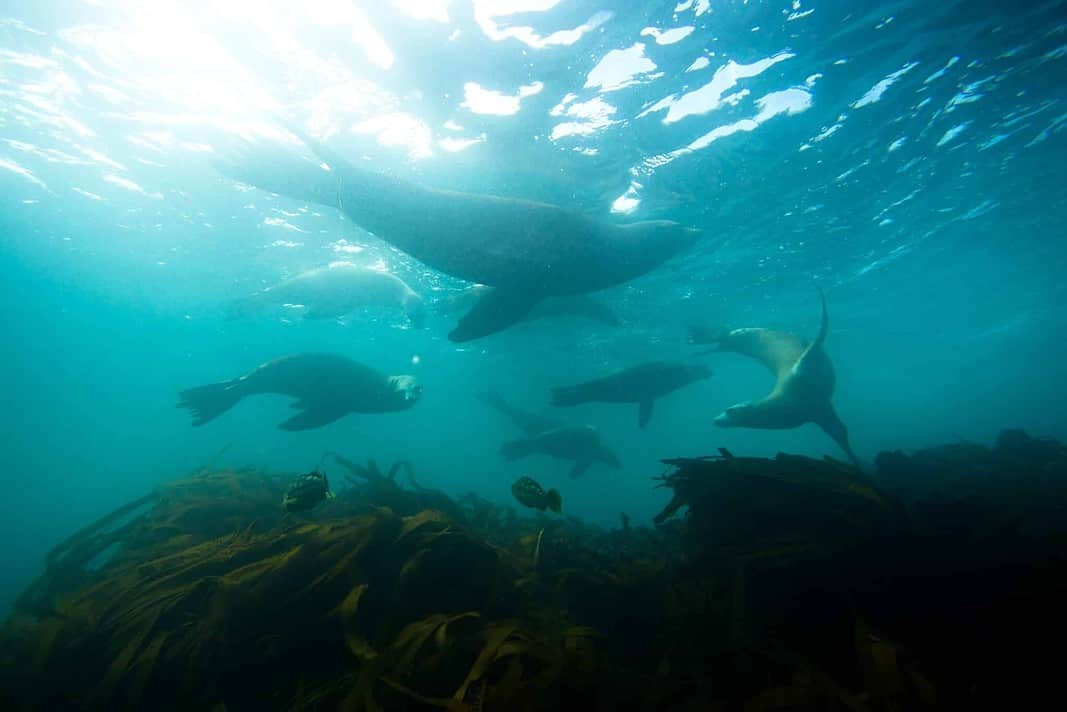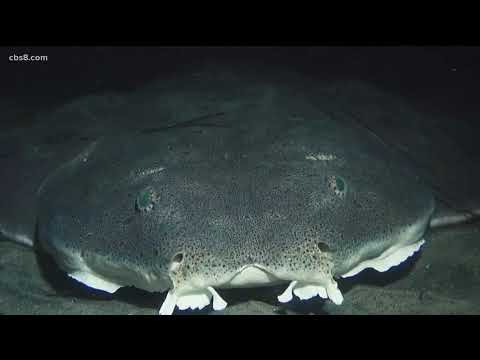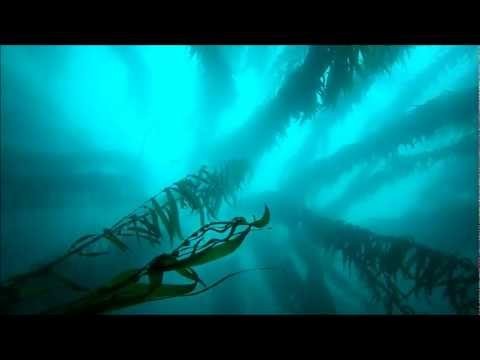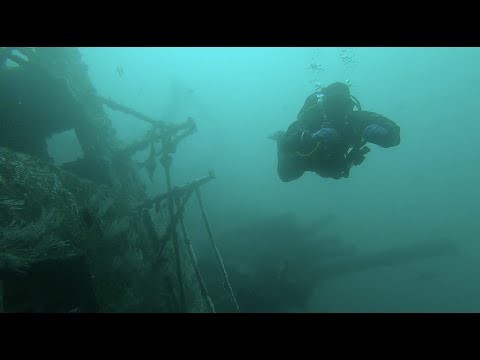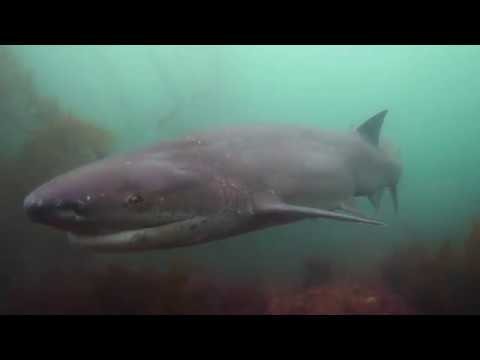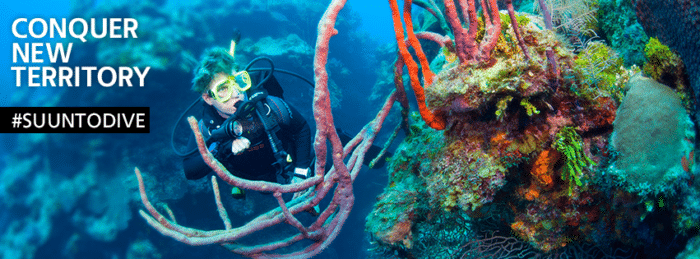Scuba Diving San Diego is part of our Top Dive Sites of the World
San Diego is famous for many different things; one is great underwater life. That is why scuba diving in San Diego is often the highlight of any trip to “America’s Finest City.” San Diego is home to some incredible shore diving, and although the water is colder due to its exposure to the Pacific Ocean, there are some ideal sheltered diving locations like La Jolla Cove.
The highlight of diving in San Diego is the various locals within the Matlahuayl State Marine Reserve. This 6,000-acre reserve, often better known as La Jolla Underwater Park, features a wide range of marine life, from sharks to wrecks and sea lions to nudibranchs. It is also home to arguably what makes the San Diego underwater life famous, the huge forest of giant kelp.
While San Diego has brilliant warm weather above the water year-round, things are a little different underwater. The water around San Diego is a little colder than the tropical waters you may be used to, ranging from 59F/15C to 72F/22 C at the surface. Due to the conditions, there is quite a difference in temperature between the surface and depth. Water temperature at depth varies between 50F/10C to 56F/13C year-round. Typically scuba diving San Diego divers use a drysuit for optimum comfort or a 7mm wet/semi-dry suit.
Location
La Jolla Shores
La Jolla Shores lies a few miles north of the legendary La Jolla Cove. This shore dive is the gateway to La Jolla Canyon. Between dives, the mile-long La Jolla Beach is a great place to spend your surface interval relaxing before your next scuba diving San Diego dip.
La Jolla shores are open to all levels of divers since most of the exciting stuff is at 60ft/18m or shallower. Heading out from the beach, inexperienced divers can spend most of the time in shallows or just outside the lip of the canyon, which drops to 600ft/180 m. more experienced divers can drop a little into the canyon. However, they will soon be back to exploding the more exciting stuff found in the shallows.
A typical dive in La Jolla shores varies in depth between 20ft/6m and 60ft/18m. one thing to keep in mind when diving La Jolla Shores is that it is a relatively long walk to and from the edge of the water. So make sure you are used to and fit enough to carry your gear over the soft beach sand to the water’s edge.
Exploring the site, there is a vast array of marine life. At the deeper parts of the dive, you can encounter sheepshead, gobies, cusk eels, fingerheads, rockfish, lobsters, sheep crabs, and innumerable nudibranchs. Things are equally interesting, if not more interesting, in the shallows. Here you can encounter guitarfish, angel sharks, pipefish, bat rays, and horn sharks, to name a few.
Point Loma
While most of the main dive sites are in the La Jolla area of San Diego, they are relatively sheltered from the full force of the Pacific Ocean. Further south, Point Loma is a different kettle of fish altogether and a great scuba diving San Diego experience. Being exposed to the ocean means the diving conditions are more strenuous, but the sites attract a more varied level of marine life.
Most of the dive sites off Point Loma are boat dives. In terms of depth, the sites are not excessively deep, with most sites starting around 40ft/12m and having a maximum depth of 120ft/36.5m. Due to its position facing the pacific ocean, the next landfall westwards being in Japan, the water off Point Loma is a little colder than those in La Jolla. Also, due to this exposure, most sites in the area are only suitable for experienced divers due to the strong currents.
With colder water and currents come lots of marine life. Being in San Diego, it will be no surprise to discover that one of the biggest attractions here is huge kelp beds. Alongside that, if you take your time to look around the rocky ocean floor, you will find a huge amount of smaller marine life like lobsters, crabs, sea slugs, lots of nudibranchs, as well as moray and other fish. Even though the water is a little cooler, there is still plenty of gorgonians and sponges for you to feast your eyes on when diving Point Loma.
Wreck Alley
Lying between the La Jolla area and Point Loma is a wreck alley at the sunken harbor. The site is about a couple of miles out to sea and is home to various shipwrecks sunk there to create an artificial reef. The site is home to sunken shipwrecks, several sunken platforms, and even the remains of the Ingraham Street Bridge, which was sunk there. The variety of wrecks makes diving wreck alley a must for any scuba diving San Diego trip.
The star of the show at wreck alley is the Canadian Mackenzie Class Destroyer, the HCMS Yukon. This 366ft/111m ship was sunk in 2000 and lies on her port side at 105ft/32m, with the top of the vessel at 68ft/19.5m. while the wreck is home to rich marine life, exploring it must be done with care and proper training. The wreck is a rabbit warren of small corridors and doorways, and you could easily get lost. Marine life you can encounter on the wreck includes crabs, lobsters, nudibranchs, other tunicates, and various fish species.
The second notable wreck in the alley is the Ruby E. This former coast guard cutter was built in 1934 and is significantly smaller than the Yukon at 165ft/50m. the ship was sunk in 1989, and she lies upright on the bottom at a depth of 85ft/25m. While most of the wreck is accessible and easy to penetrate, care should be taken since it still presents a challenge. The wreck is home to multiple species of fish and anemones, crabs’ lobsters, and other critters.
Other notable wrecks and artifacts worth exploring include the wreck of El Rey, the sunken Naval Ocean Systems Center (NOSC) Tower, the Ingraham Street Bridges, and the large Sewer Pipe. The site is home to diverse marine life, including nudibranchs, tunicates, scallops, crabs, brittle stars, and other fish species.
Scuba Diving San Diego Legend The Giant Kelp Forest
Scuba Diving San Diego is famous worldwide for the vast forests of giant kelp. While there are plenty of dive sites to encounter these huge forests, diving at La Jolla Cove from Shore is the best location. Wandering into the water of the sandy beach, this relatively shallow site is perfect for divers and snorkelers.
Diving La Jolla Cove, you will spend most of your time in the shallows. Atypical dive around here varies in depth between 10ft/3m and 45ft/13.5m. Although it can venture a little deeper to around 60ft/18m, most of the action and the enormous kelp forests are in the shallows. One thing to remember is that access to the beach is via a set of stairs, so ensure you are comfortable going up and down stairs with your scuba gear on.
Underwater the are lots of fascinating things to see. While the giant kelp, which can reach lengths of 100ft/30m, is the main attraction, other marine life is aplenty. Checking out the rocky reef on the bottom, there are many critters. Amongst the kelp, you have a good chance of encountering harbor seals and curious sealions who can be very friendly and curious about divers.
Depending on the time of year, you can also find guitarfish, barracuda, soupfin sharks, and kelp bass. Leopard sharks are regular visitors to the kelp forest and make for an exciting surprise. The biggest and most interesting surprise to meet on a La Jolla cove dive is the huge sevengill sharks. These gentle giants are known to cruise around amongst the kelp and can be quite the surprise when diving La Jolla Cove.
Click here for more Top Dive Sites of the World
Brought To You By
Our Top Dive Sites of the World guide is brought to you by Suunto. We recommend that you use a Suunto Dive Computer when scuba diving or freediving at one of these dive sites. Suunto is the world’s leading dive computer designer and manufacturer providing diving instruments for recreational, technical, and freediving. You can find out more at Suunto.com.

